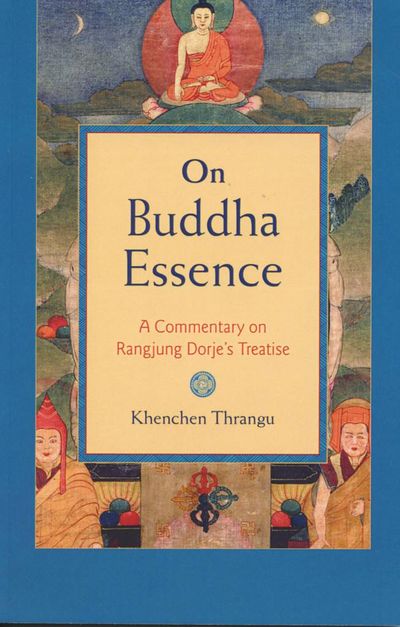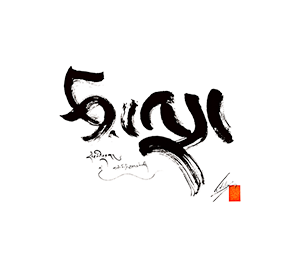- Translator's Prefacevii
- Acknowledgments xvii
- Introduction xix
- Outline of the Text xxvii
- 1. The Brief Summary of the Treatise 1
- 2. An Explanation of the Mahayana Abhidharma Sutra 15
- 3. Correct and Incorrect Concepts 33
- 4. The Explanation of Buddha Nature 46
- 5. The Qualities of the Rupakayas 81
- 6. The Refutation of Others' Views 98
- 7. Describing Buddha Nature through Quotations 132
- 8. The Conclusion 138
- 9. The Meditation Practice of This Treatise 141
- Notes 147
- Glossary 151
- Index 163
(Created page with "{{Book |BookPerson={{Book-person |PersonPage=Thrangu Rinpoche |PersonName=Thrangu Rinpoche }}{{Book-person |PersonPage=Karmapa, 3rd |PersonName=Third Karmapa Rangjung Dorje }}...") |
No edit summary |
||
| Line 1: | Line 1: | ||
{{Book | {{Book | ||
|BookParentPage=Library | |||
|BookPerson={{Book-person | |BookPerson={{Book-person | ||
|PersonPage=Thrangu Rinpoche | |PersonPage=Thrangu Rinpoche | ||
| Line 11: | Line 12: | ||
}} | }} | ||
|FullTextRead=No | |FullTextRead=No | ||
|TextTranslated=Texts/De bzhin gshegs pa'i snying po bstan pa'i bstan bcos kyi rnam 'grel rang byung dgongs gsal | |||
|BookToc=* {{i|Translator's Preface|vii}} | |BookToc=* {{i|Translator's Preface|vii}} | ||
* {{i|Acknowledgments| xvii}} | * {{i|Acknowledgments| xvii}} | ||
Revision as of 14:39, 25 July 2019
A Treatise on Buddha Nature by Rangjung Dorje, the third Karmapa, is one of the Kagyu lineage's oldest and most important texts, belonging to the tradition of the Six Yogas of Naropa. In the nineteenth century, Jamgön Kongtrul composed a commentary to it, which Khenchen Thrangu uses as the basis for the teachings in this book.
The subject of this famous treatise is budda essence, the basic nature of all beings. The term is a translation of the Sanskrit tathagatagarbha, or deshek nyingpo (bde-gshegs snying-po) in Tibetan. The Tibetan interprets garbha as "essence" (snying-po), the innermost part of something. Both terms indicate that our very nature is buddhahood—buddha essence is possessed not only by enlightened masters but by everyone.
The path to awakening buddha essence, or buddha nature, is meditation. The practitioner needs to understand not only how to meditate, but also the reasons for meditation, in order to develop insight. This text contains complete instruction on how to discover buddha essence in our ourselves.
(Source: back cover)
| Citation | Thrangu Rinpoche. On Buddha Essence: A Commentary on Rangjung Dorje's Treatise. Translated by Peter Alan Roberts. Edited by Clark Johnson. Boston: Shambhala Publications, 2006. |
|---|---|
rang byung rdo rje, (Karmapa, 3rd). de bzhin gshegs pa'i snying po bstan pa'i bstan bcos
- In gsung 'bum rang byung rdo rje, Vol. 7: 282-290. Zi ling: mtshur phu mkhan po lo yag bkra shis, 2006.

- In mdo sngags mtshams sbyor, pp 387-394. Zi ling: mtsho sngon mi rigs dpe skrun khang, 2004.

It is very fortunate that phenomena have no reality because beings are in a state of suffering; because things have no reality, beings can be liberated.
~ in On Buddha Essence, page(s) 44
All appearances are a duality of a perceiver and that which is perceived. These have no true reality, and so they are empty of inherent existence. Although these appearances are without reality, they are not false or wrong, because these appearances do arise.
~ in On Buddha Essence, page(s) 47
Ultimately, the buddha nature has always been pure and has never been stained. Primordially, the incidental stains have no reality of their own.
~ in On Buddha Essence, page(s) 93


